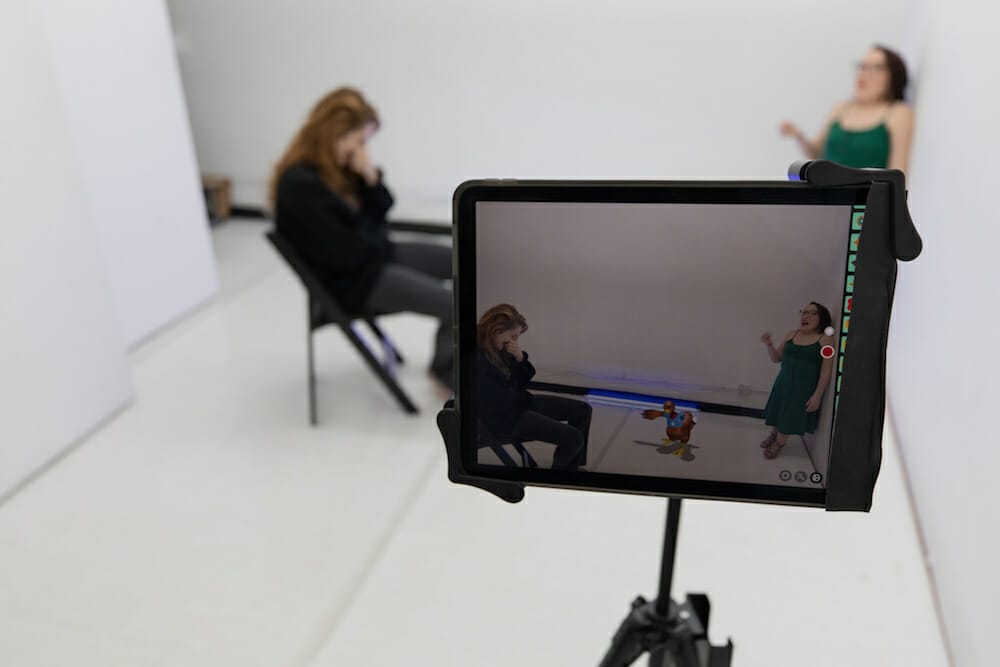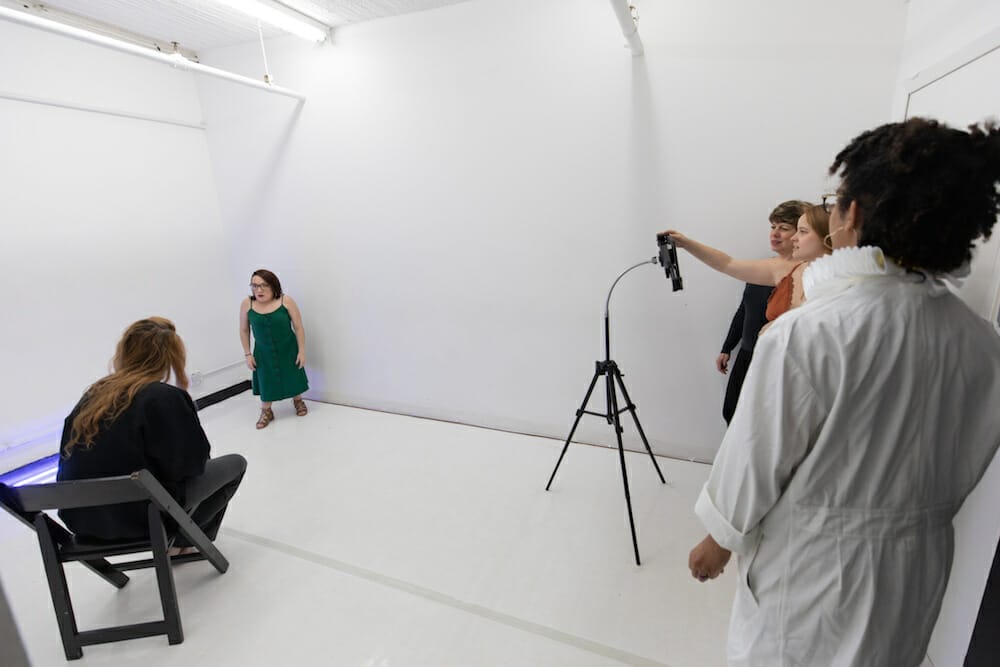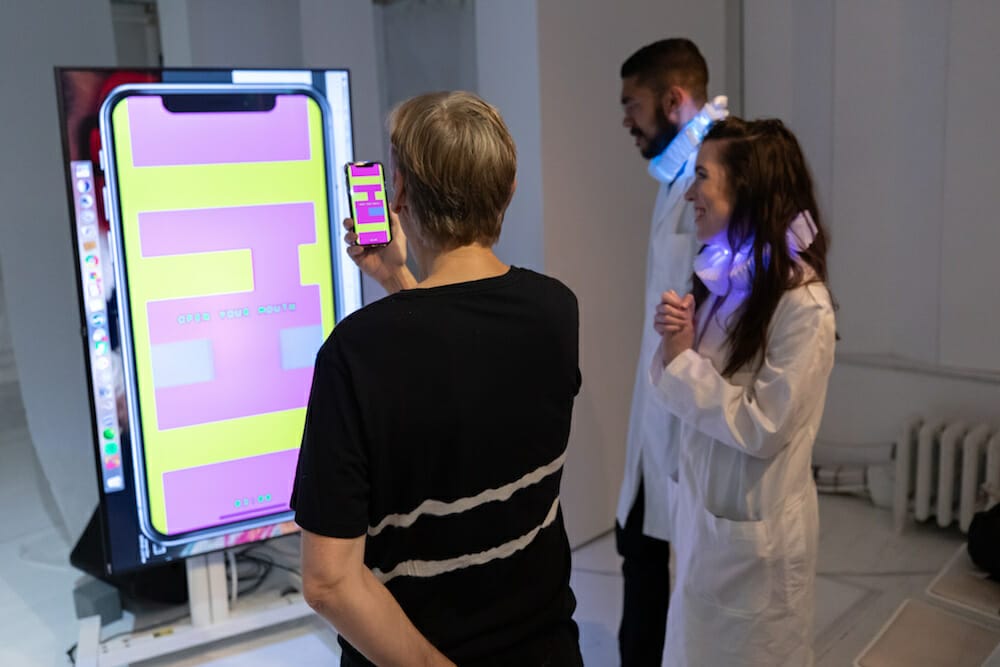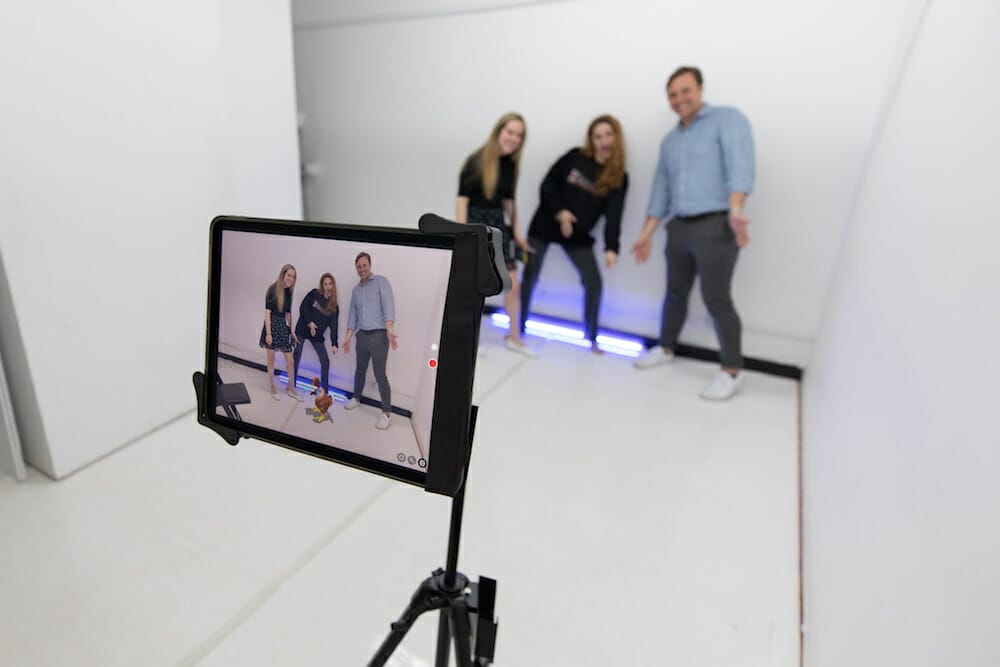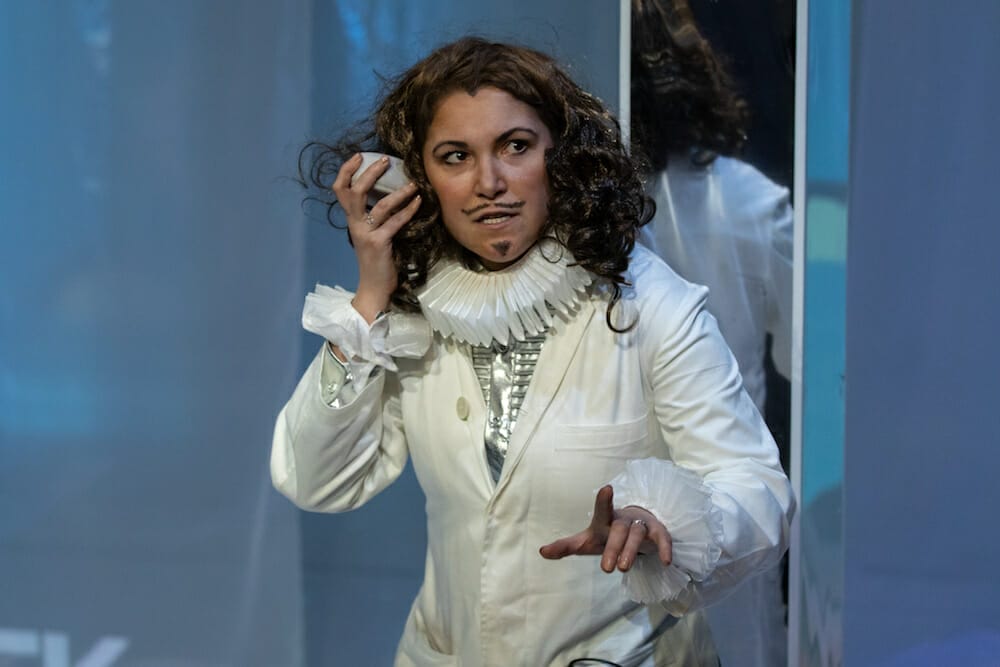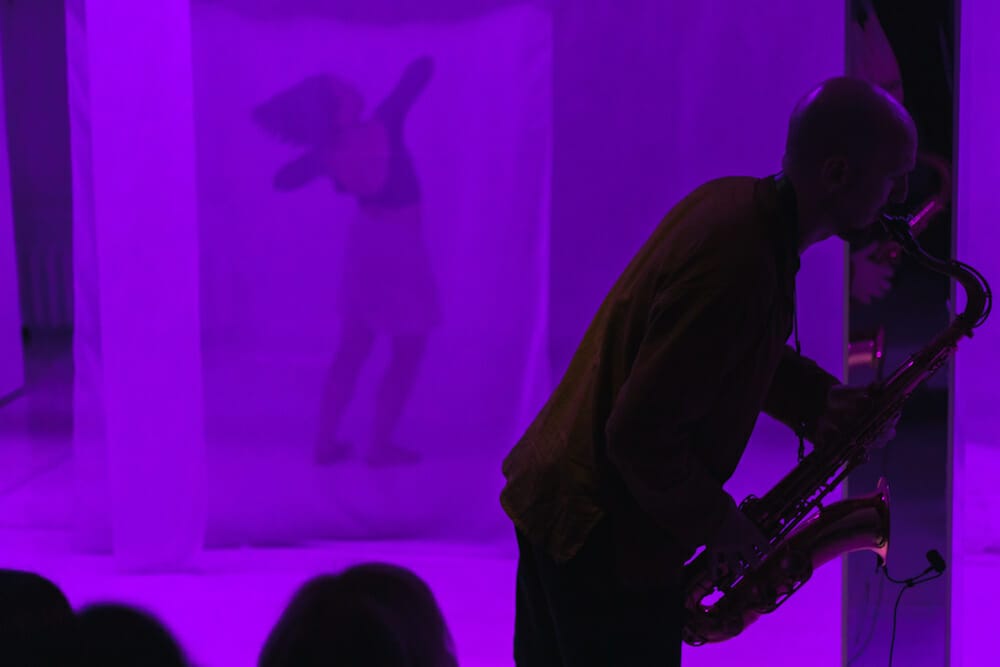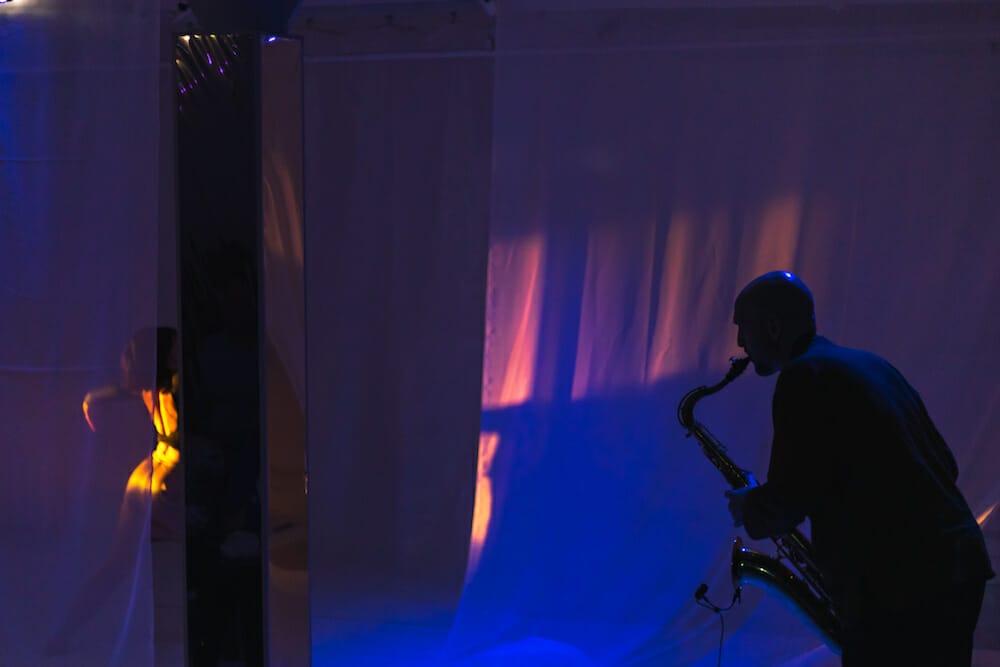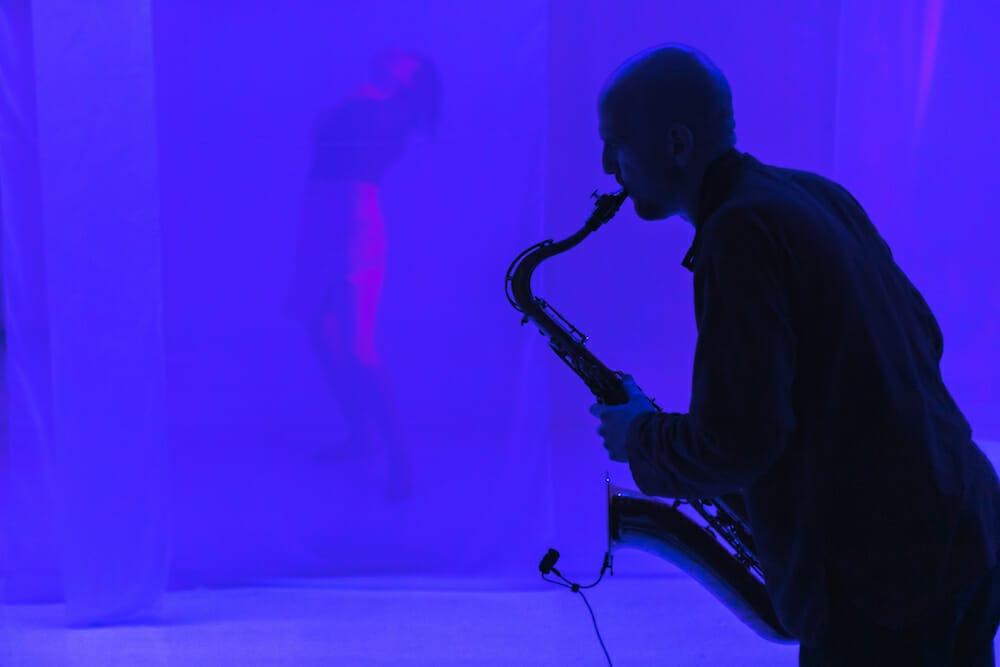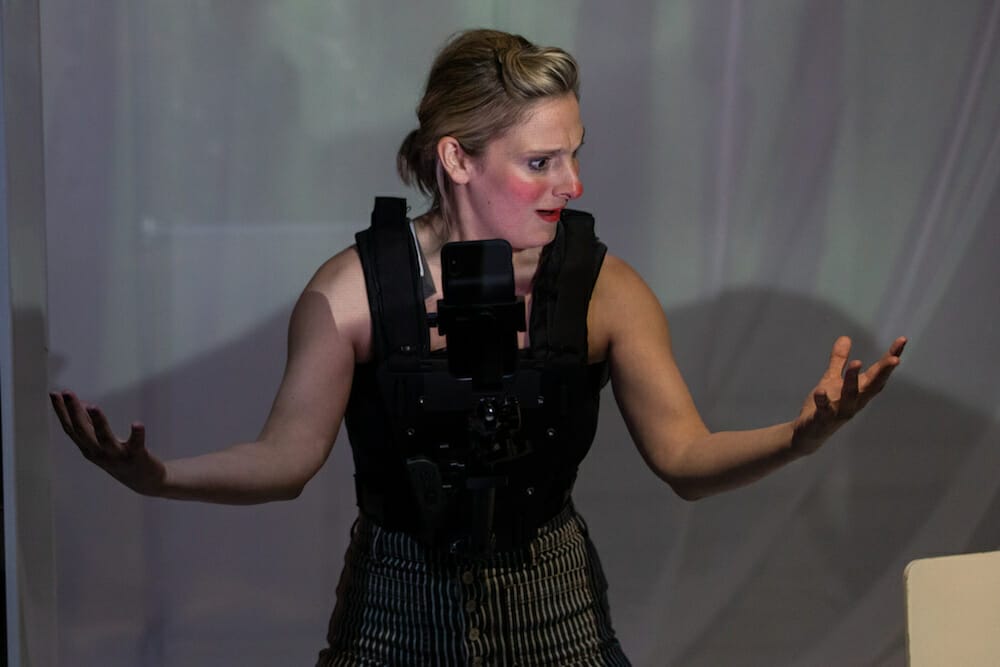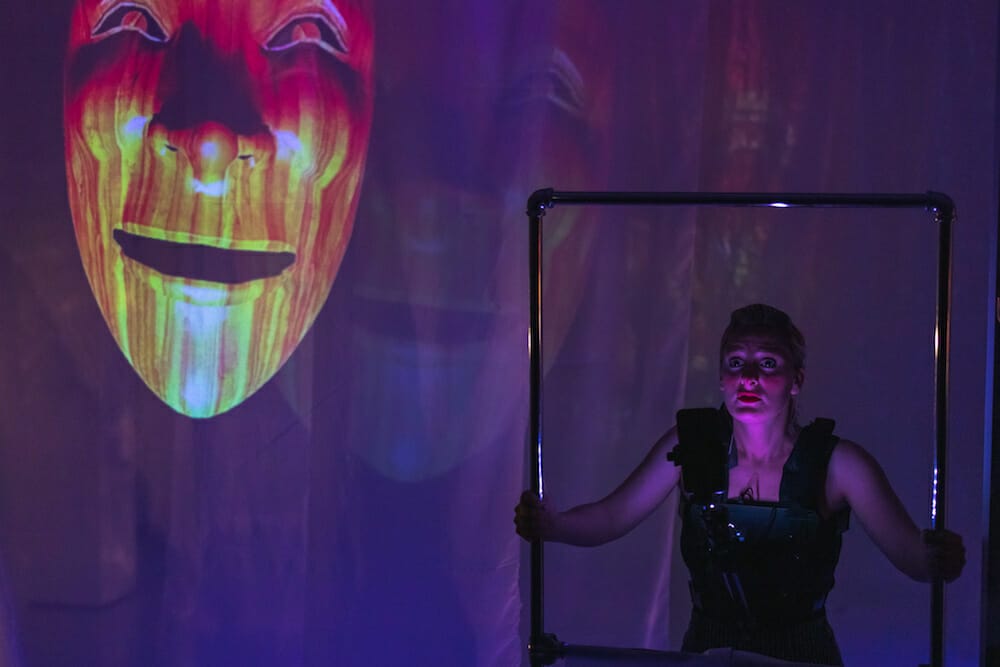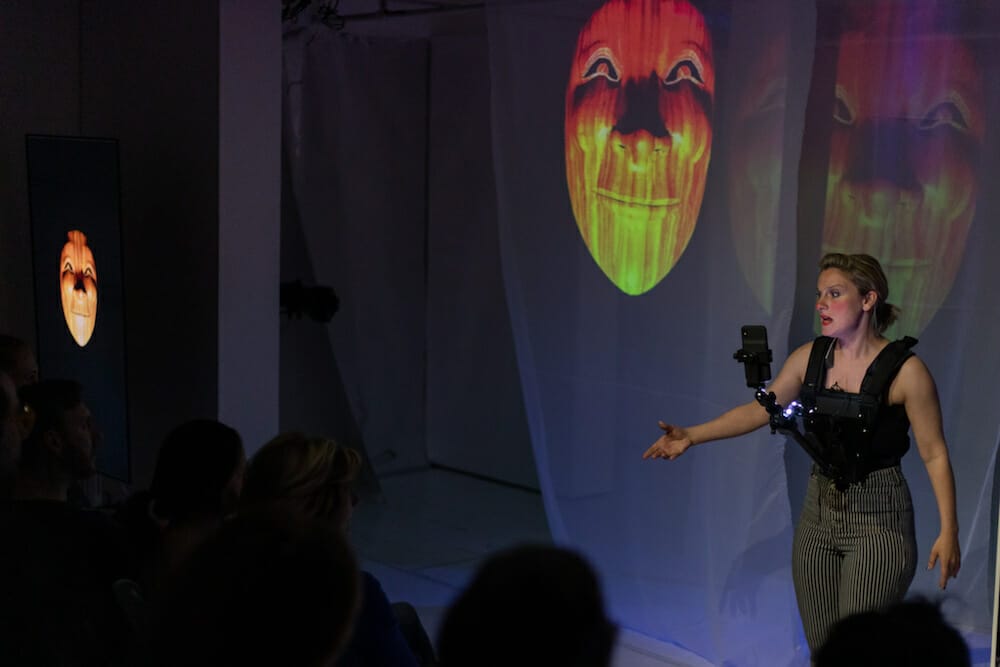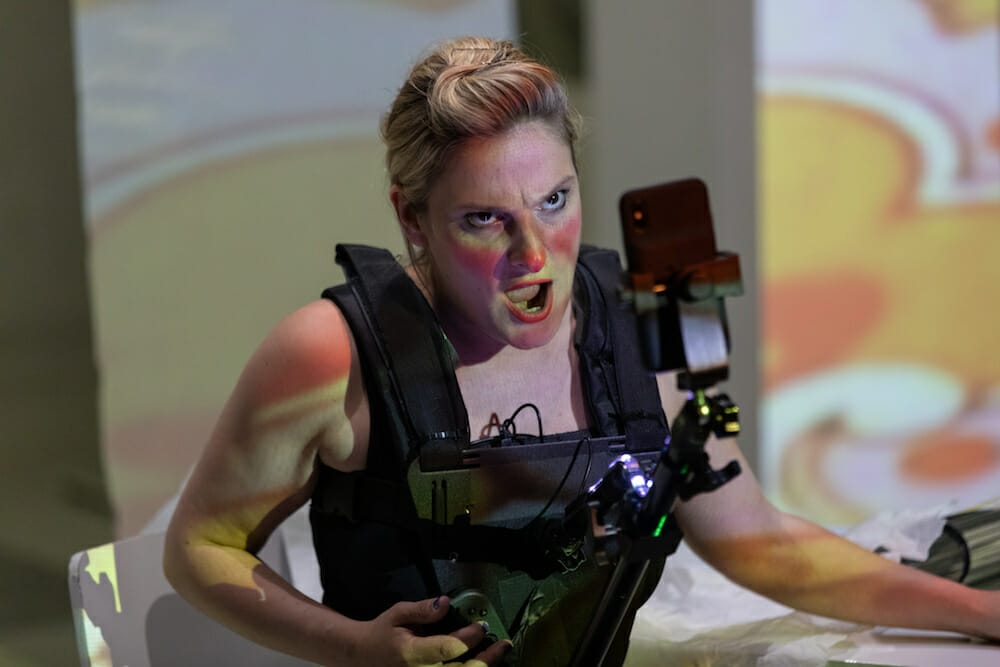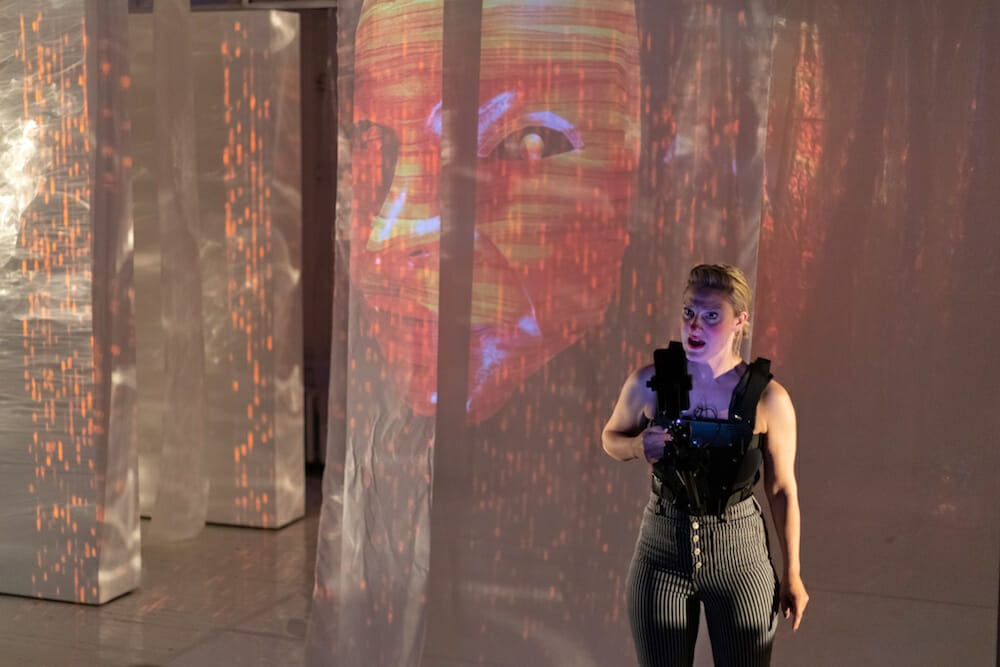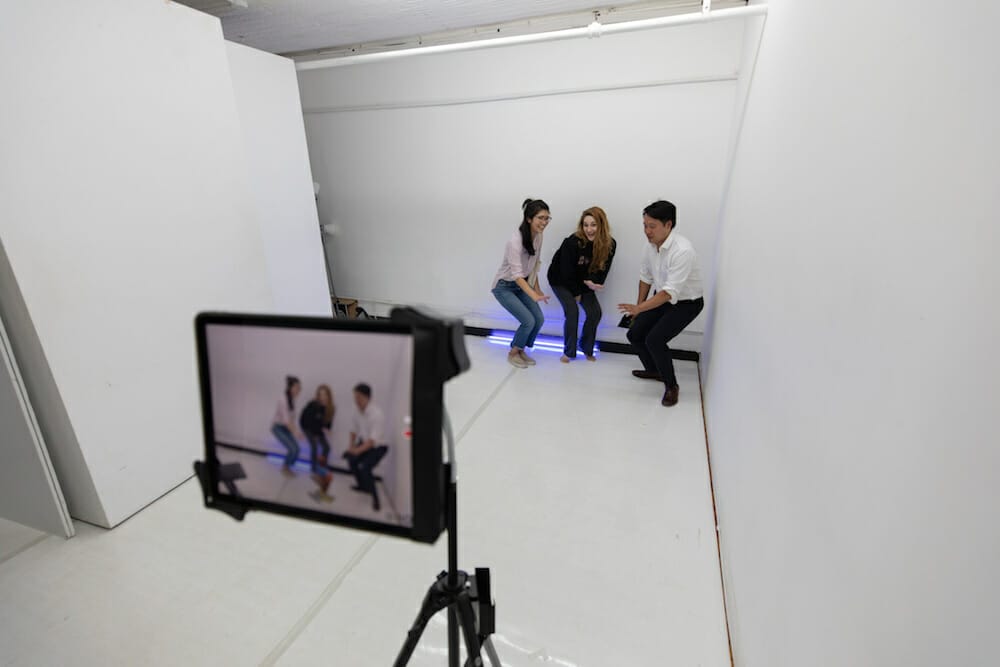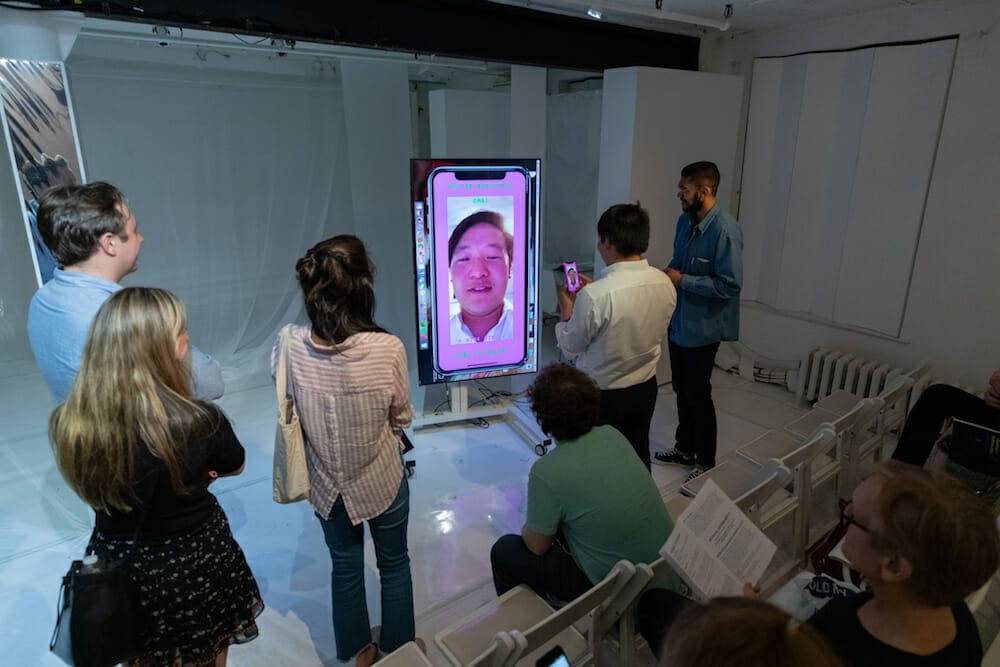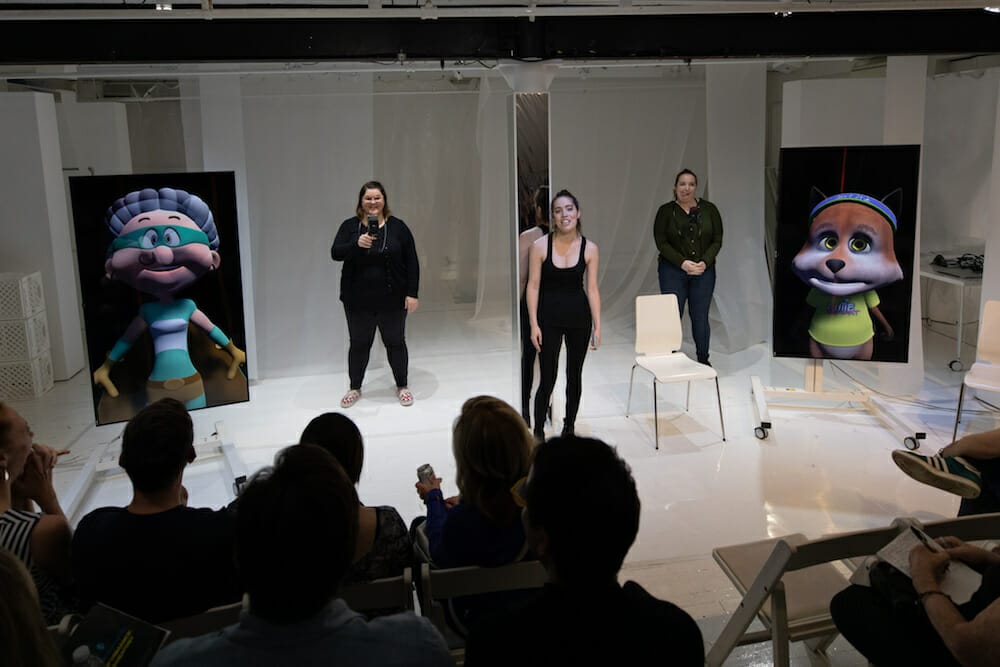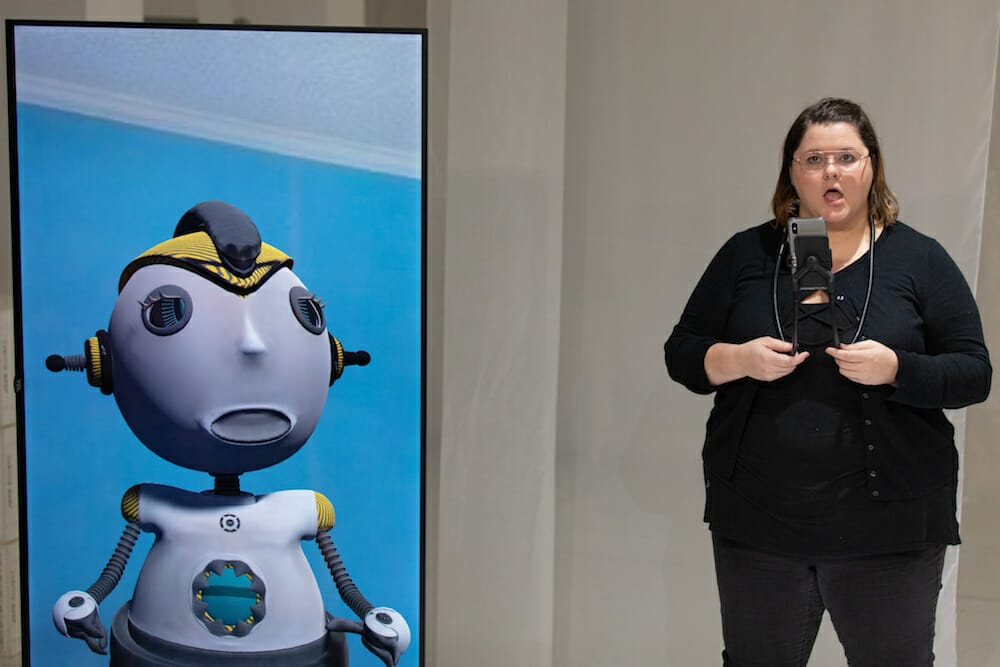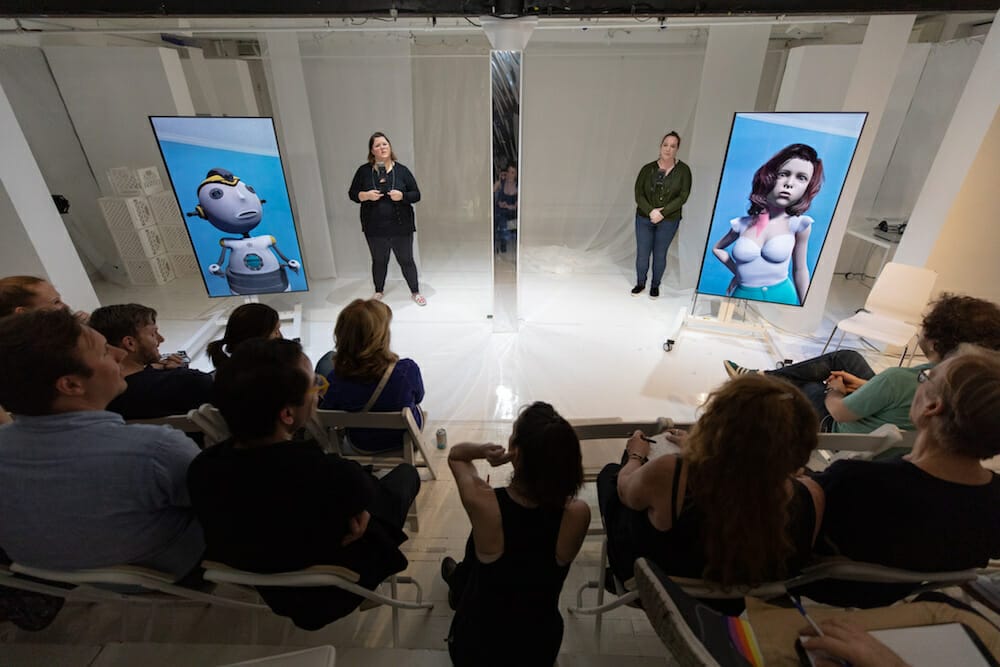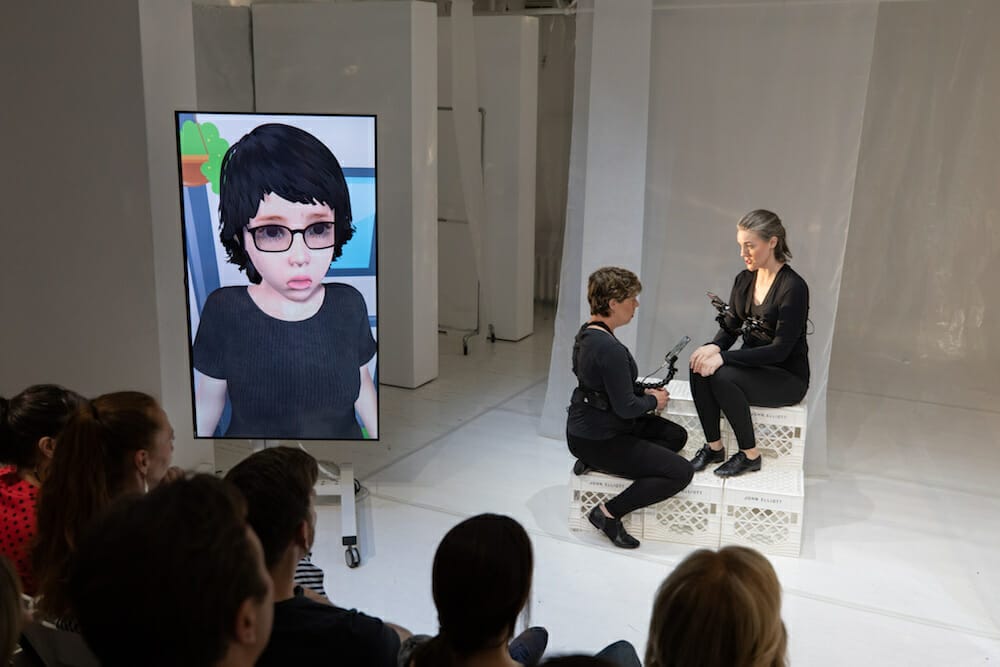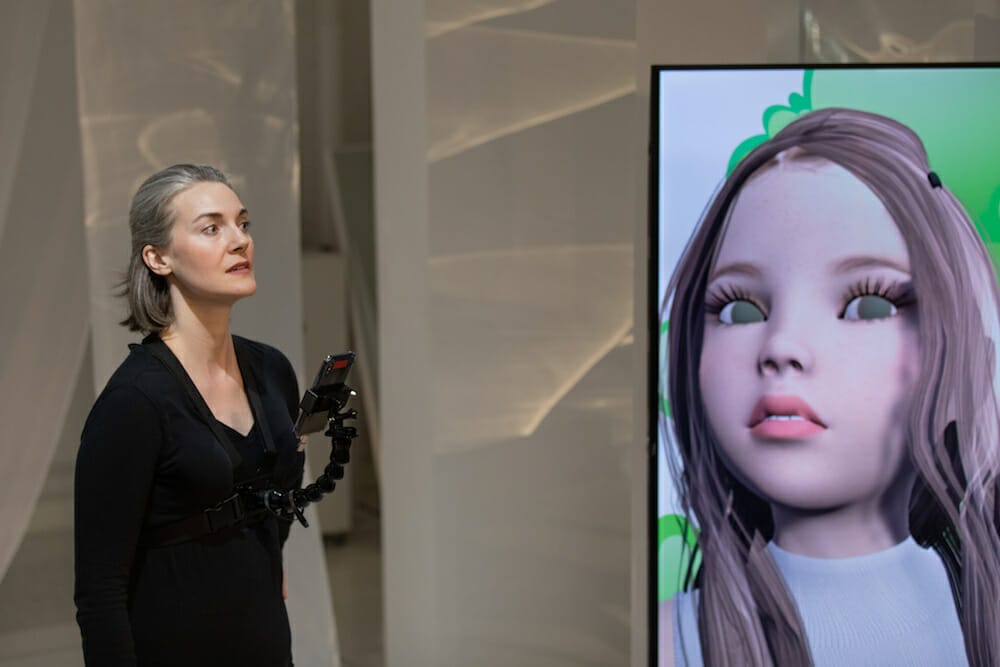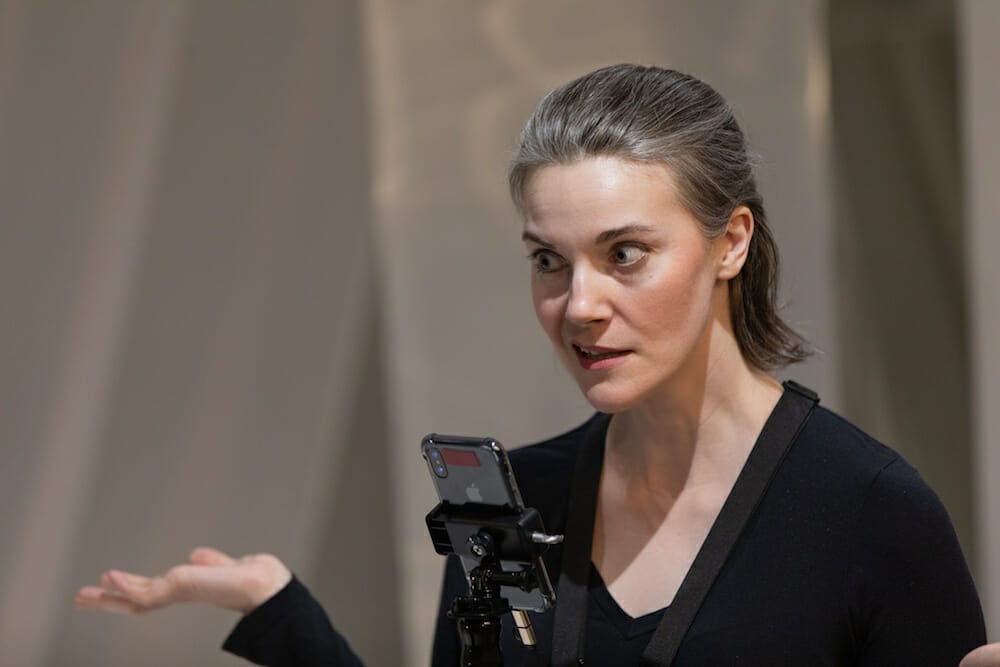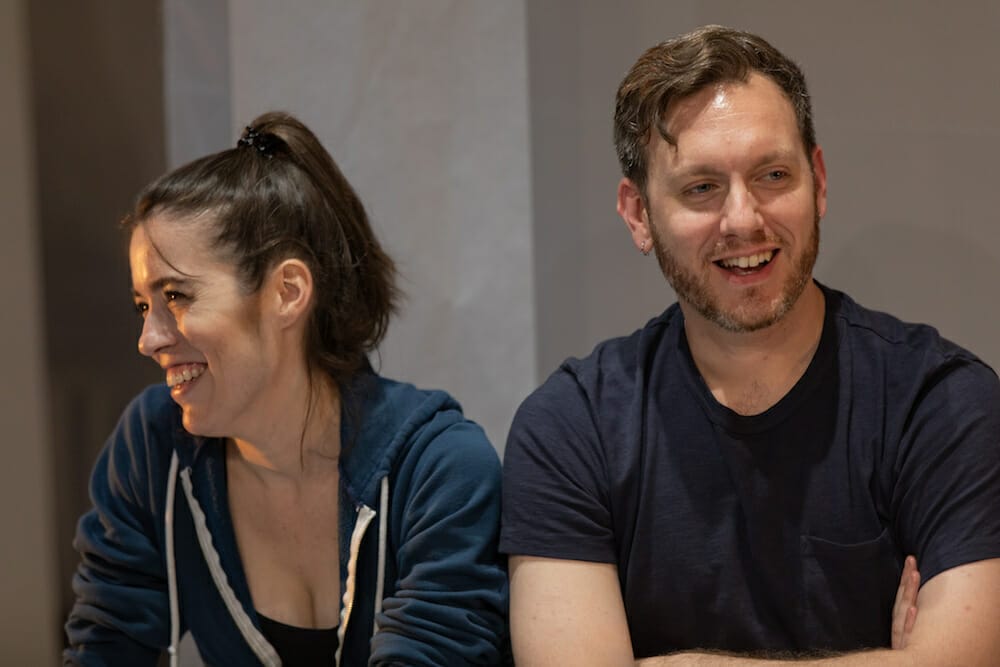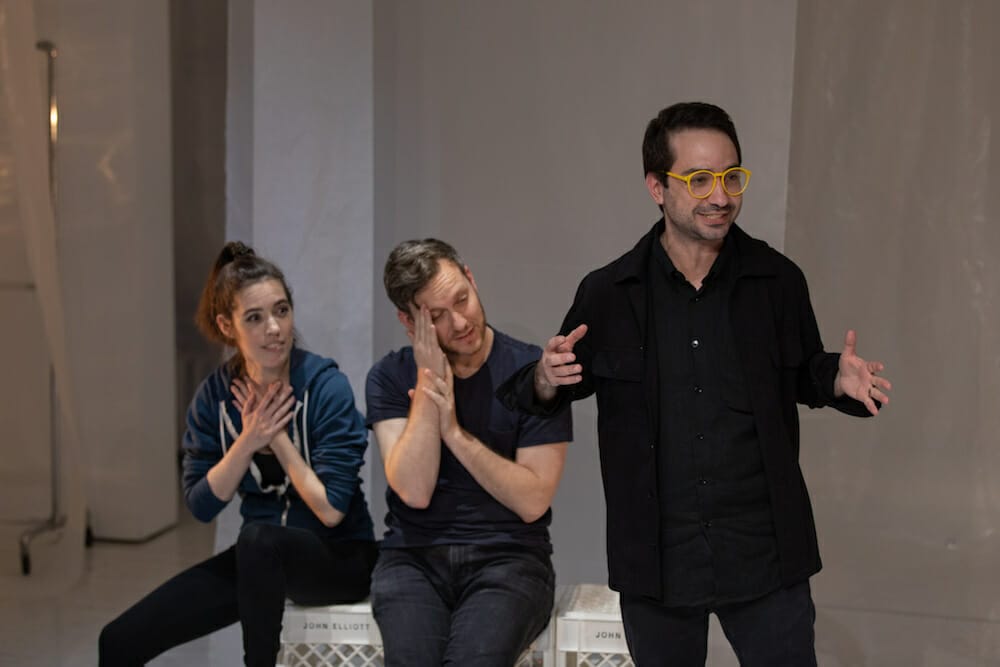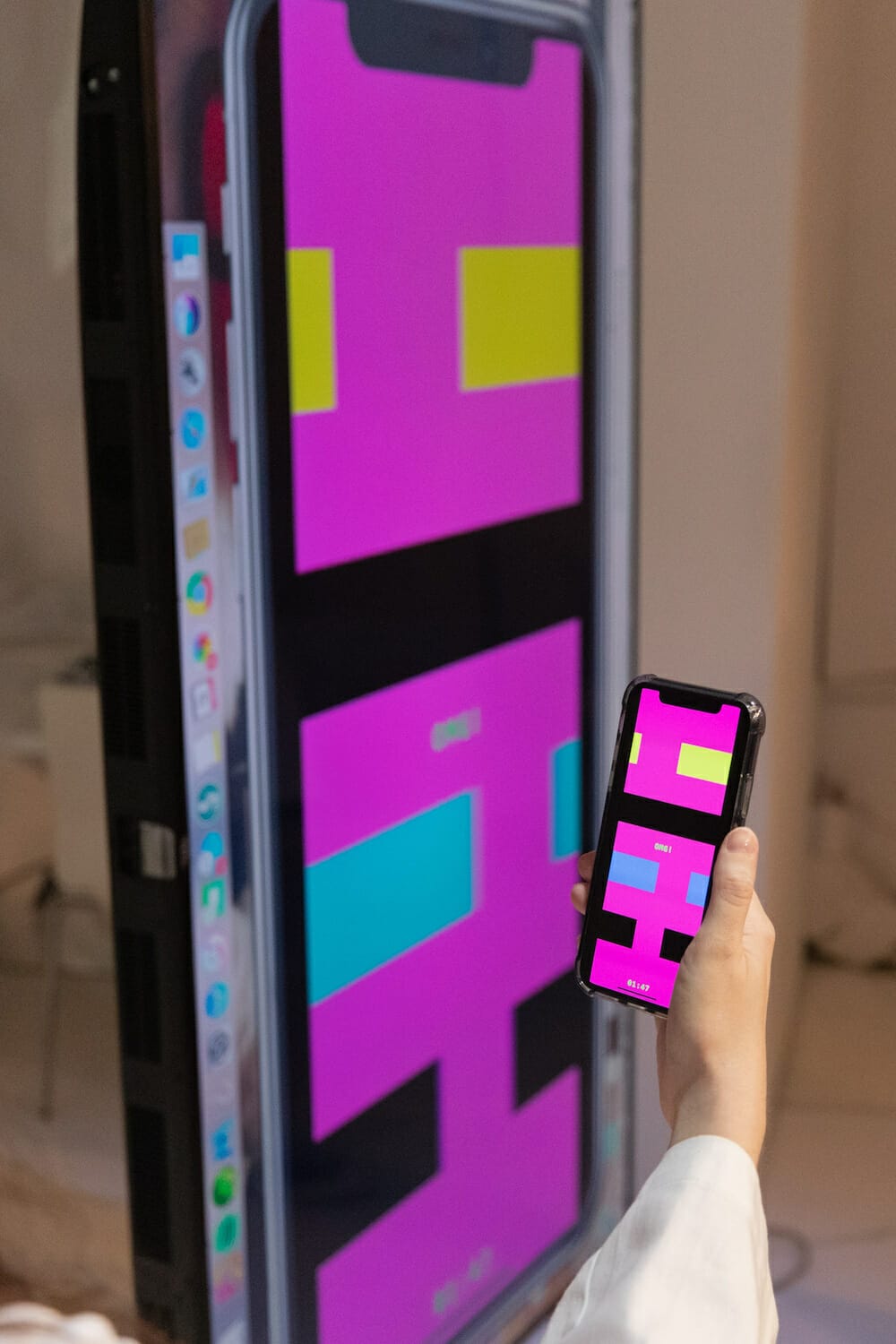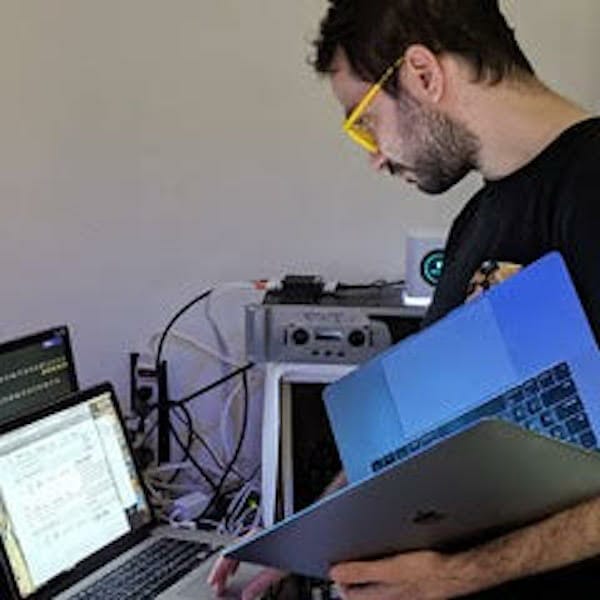When:
Through June 22
Where:
TheaterLab
357 West 36th Street, 3rd Floor
New York, New York
Picture this Post Editor Amy Munice says that of the many hundreds (thousands?) of news releases that cross her desk every week, it’s the rare bird that rises to the top and shouts as loudly for attention as the recent invitation from New York-based Technodramatists Performance Laboratory.
Technodramatists is currently presenting works that showcase many of their techie stagecraft innovations, starting with their proprietary face-sync application, weARlive, in a segment of Error: A Comedy Of, in which actress Claire Tyers performs every role in The Comedy of Errors, with every character represented by augmented reality motion capture animations (a cartoon avatar) which appear on the screen next to her mirroring her every movement and expression on stage in real time. Additionally,
Kids Play by Reese Thompson, is presented by Recognize Theater using the Technodramatists’ weARlive app to explore issues of gender and sexuality. The musical portion of this performance is headlined by Sway, an autonomous musical processing system, created by multi-instrumentalist and composer Carl Testa. Each evening offers a one of a kind electro-acoustic performance with Testa playing the stand up bass as Sway’s processor analyzes the tone, density and amplitude of his performance and generates a dynamic musical collage that responds to changes in real-time.
Backtracking, Picture this Post (PTP) caught up the group’s Artistic Director, Loren Svarc (LS), for background on how and why Techodramatists Performance Laboratory (founded Summer 2018) came to be, and where they hope to go.
Lorne Svarc is a Canadian writer/producer/educator whose work explores the spectrum of narrative expression. Notable work includes his short film Sapiosexual which was licensed cable station ShortsTV; his play Chained Woman which was featured in Infinitheatre's Pipeline Series and was a semi-finalist for the 2016 Eugene O'neill Playwriting Conference; and the script for Surface Tensions interactive installation by experience designer Rosalind Paradis, first prize winner at NYC Media Lab Summit.
(PTP) What is your niche in the world? How are you different from other theater tech organizations?
(SV) When I was a kid, I dreamed of making animated films, but the equipment available at the time was too expensive and difficult to use to make anything that fit the scope my imagination. Now there are free iPad apps that allow anyone to make professional quality animations in minutes. This is the spirit in which we founded Technodramatists.
Technology has never been more central to our lives. Our daily interactions with our devices have turned us into passive consumers. But, our phones, laptops and tablets are actually loaded with immense creative potential. For instance, only a few years ago motion capture technology was so expensive that you basically had to be Marvel or Disney to be able to use it. Now we’ve built an app that uses the 3d sensors on smart phones that performs professional level facial tracking with something that most people already have in their pocket. We’re doing the same with augmented reality, 3d animation, holograms and more. You might not know exactly what all these things are now, which is why we’re using stories and performances to introduce them to mainstream audiences. There are many companies just like us, who are harnessing these innovations for creative means, but they’re focusing exclusively on streamlining existing film and animation production and postproduction techniques. We see the human element of live performance as key to unlocking the creative potential of these new interactive technologies and are one of the only entities using them to create brand new forms of narrative expression.
In this current performance we’re showcasing the exciting projects we’re working on while introducing audiences, who may not be familiar with new innovations like Augmented and Extended Reality, to these new technologies in fun and accessible ways. The event is more than a stage performance and it’s more than an art exhibition. It’s a celebration of creative potential, where imagination is not limited to what is was formerly deemed possible.
What is the background/skills of the various people on your team?
The backgrounds and skillsets of our team members are almost too varied to enumerate. Plus, almost no one at Technodramatists holds only one job. We have playwrights, directors, producers, stage managers, AR designers, user interface experts, programmers, developers, 3d artists snd creative problem solvers who fall outside of the theatre and technology fields who all work together to ensure that audiences cannot detect anyone’s individual contribution, only the totality of the production and the meaning of the stories we’re trying to tell.
How does the animation/technology being showcased in Error: a comedy of work?
Error: A Comedy Of showcases weARlive, our new face-sync performance app. As the actor performs, an iPhone scans their face. Our app then projects their facial movements onto 3d avatars, essentially creating digital masks or puppets that will mirror their every smile, wink and nod in real time. The system includes a small remote that the performer uses to cycle between avatars, giving them control over which character they are syncing with at any moment, allowing an actor to inhabit every character in a scene.
Are there applications for this technology outside of theater per se?
Along with our accompanying desktop application, weARlive allows users to sync their facial movements with a wide variety of 3d animated characters and masks. Users can switch between characters, backgrounds and environments in real time, providing new opportunities for comedic and dramatic explorations of character, identity and technological representation.
weARlive can be connected to any TV, monitor or projector and is a fun and creative tool for theatre, keynoting, imaginative play, or any sort of live environment.
What can attendees expect from this performance- who will be a good match audience?
First off, contrary to its name, Kids Play is unmistakably NOT intended for children. The playwright, Reese Thompson insists that the play’s title and its associated confusion are a feature, not a bug. I, for one, am not inclined to argue with a playwright on such matters.
How did your collaboration with Recognize Theater develop?
My collaboration with Recognize Theater goes back several years, having worked as a playwright and dramaturg on a number of their projects. I’m continuously impressed by the way their work dives deeply into controversial and uncomfortable territory while remaining engaging and accessible to mainstream audiences. When I added Kids Play to the program I knew that Kristin Hecker (their artistic director) would be the ideal person to helm the project. Kids Play deals with intense subject matter like teen sexuality, divorce, and mental illness and the way they used cartoon avatars to represent the play’s two pre-teen characters simultaneously shields us from and accents the tension that already exists in the play’s playful but dark text. I recommend this play to anyone who enjoys edgy and thought provoking theatre.
Is Testa’s music used in any of your other projects? Why are you including the SWAY in this event?
Music and theater are intrinsically entwined. And while none of our featured musical acts are being used in our other projects at Technodramatists Performance Laboratory, we wanted to use this event to build a community of likeminded artists of varying disciplines and art forms. Just as in theatre, recent technological innovations have brought incredible power into music-makers’ hands. We’re unbelievably excited about Testa’s work with computer listening and real time processing and are already in discussions about future collaborations.
Is the upcoming event geared more for theater goers or theater makers?
We definitely see this event as an entertaining night of theatre for a wide array of audiences. You really get everything you could ask for— Drama, comedy, music, interactive experiences— all in a tight 95-minute program.
That’s not to say that this event isn’t also intended to attract the attention of theater-makers. Our goal is for our performance tools to be as widely adopted as possible and we hope that theater-makers check out this production and get interested in integrating Augmented Reality and Face sync and some of our other innovations into their next pieces.
What other projects do you have in the works?
Part of the joy of what we’re doing is that the tech possibilities grow greater literally almost every day. We’re going to keep developing the projects and tools we’re showcasing at Technodramatists Performance Laboratory while adopting and integrating all the exciting new innovations that come about. Actually, right as we opened, Apple announced an update to the platform that our app is built on, and we’ll soon have the capacity to track and sync full body movements, so that’s definitely something we’ll be adding to our app really soon. More generally, we think that augmented reality can become a mainstream theatre tool like lighting and projections and aim to be at the forefront of achieving this.
What can people expect when they walk in the door? Walk us through the exhibit?
As soon as you get off the elevator you’ll see a hologram of our logo. This isn’t an exhibit per se but does show off how hologram technology, which only a few years ago was reserved for the likes of Star Trek and Super Bowl half-time shows, can now be achieved pretty effectively for a few hundred dollars.
Next, you can experience a short augmented reality performance piece I wrote and designed called Tormented Reality: A young couple are in the midst of a fight because one sees a dancing turkey and the other doesn’t. When you enter the room all you see is the live performers but when you look through the AR tablet you too can see the dancing Turkey. At the end of the piece one of the performers invites you to dance and take a picture with the animated turkey.
In the main theatre you can play Wink Wink, a puzzle video game that uses your face as a controller. This game uses the same type of interface as weARlive and is a fun introduction to Face Sync technology.
At intermission we offer to take a free 3d scan of audiences’ head. This used to be an expensive process, requiring a dozen cameras but now with one of our creative partners, Scandy Pro, a phone app is able to accomplish this for free. In the future, we plan on using this technology to quickly incorporate performers’ and audiences’ faces into digital worlds on stage.
Lastly, after the performances concludes, we display a work by Belgian artist Vincent Bal. A self-described Shadowologist, Bal’s work consists of drawings on paper, which he places a real world object like a teacup or tissue box on top of. Then with proper positioning of a lamp, the objects shadow reveals a brand new scene. I first learned of his work on Twitter but it’s really quite astonishing to see it in person.
We end the night with this analogue exhibit to highlight how technology doesn’t always have to be high tech to be a powerful storytelling tool, that we still appreciate and need the basics such as light, props and drawings to achieve our artistic goals.
What else do you want people to know about Technodramatists Performance Laboratory?
I want to stress that despite the over-seriousness that often pervades both the theatre and tech industries, Technodramatists is trying to do something fun. We’re creating something new and exciting and we really want to share it with world.
For more information, visit the Techndramatist Performance Laboratory website.
Photos courtesy of Technodramatists Performance Laboratory

